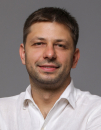Control of Electromechanical Systems
Data is displayed for academic year: 2023./2024.
Exercises
Laboratory exercises
Course Description
Control of electrical drives with a complex mechanical load - drives with torsion, friction, backlash, and variable moment of inertia. Torsion, friction, and backlash modeling. Motion controller synthesis based on double ratio optimum and modulus optimum. Control system performance improvement using feedforward controller. Friction and backlash compensation in electrical drives. Application of the acquired knowledge in the area of electrical drives, vehicle dynamics, and complex mechatronic systems in general. The course encompasses laboratory exercises on real complex electromechanical systems and adopting the knowledge through practical, experimental work.
Study Programmes
University graduate
[FER3-HR] Audio Technologies and Electroacoustics - profile
Elective Courses
(1. semester)
(3. semester)
[FER3-HR] Communication and Space Technologies - profile
Elective Courses
(3. semester)
[FER3-HR] Computational Modelling in Engineering - profile
Elective Courses
(3. semester)
[FER3-HR] Computer Engineering - profile
Elective Courses
(3. semester)
[FER3-HR] Computer Science - profile
Elective Courses
(3. semester)
[FER3-HR] Control Systems and Robotics - profile
Core-elective courses 1
(3. semester)
[FER3-HR] Data Science - profile
Elective Courses
(3. semester)
[FER3-HR] Electrical Power Engineering - profile
Elective Courses
(3. semester)
[FER3-HR] Electric Machines, Drives and Automation - profile
(3. semester)
[FER3-HR] Electronic and Computer Engineering - profile
Elective Courses
(3. semester)
[FER3-HR] Electronics - profile
Elective Courses
(3. semester)
[FER3-HR] Information and Communication Engineering - profile
Elective Courses
(3. semester)
[FER3-HR] Network Science - profile
Elective Courses
(3. semester)
[FER3-HR] Software Engineering and Information Systems - profile
Elective Courses
(3. semester)
Learning Outcomes
- Apply a multi loop (cascade) control on two-mass electromechanical system with an elastic shaft
- Analyze the behavior of two-mass electromechanical system with an elastic shaft
- Synthesize speed and position controllers for two-mass electromechanical system using practical optimums
- Apply friction effect compensation techniques
- Apply backlash effect compensation techniques
Forms of Teaching
Lectures
Lectures will be organized on weekly basis with weekly load of three hours
ExercisesWill be organized on weekly basis with weekly load of 1 hour
LaboratoryThis component will be organized as 4 three-hours laboratory exams
Grading Method
| Continuous Assessment | Exam | |||||
|---|---|---|---|---|---|---|
| Type | Threshold | Percent of Grade | Threshold | Percent of Grade | ||
| Laboratory Exercises | 40 % | 20 % | 40 % | 20 % | ||
| Mid Term Exam: Written | 40 % | 30 % | 0 % | |||
| Final Exam: Written | 40 % | 30 % | ||||
| Final Exam: Oral | 20 % | |||||
| Exam: Written | 40 % | 40 % | ||||
| Exam: Oral | 40 % | |||||
Week by Week Schedule
- Comparison of single loop and multi loop (cascade) control systems, Magnitude optimum (MO), Symetric optimum (SO)
- Symetric optimum (SO), Digital implementation of symetric optimum
- Modeling of two-mass electromechanical system with elastic coupling, Parameter identification of electrical drives with elastic coupling using spectral analysis, Parameter identification of electrical drives with elastic coupling using parametric methods
- Double ratio optimum
- Modulus optimum
- Double ratio optimum, Speed control of electrical drives with elastic coupling using PI based controllers
- Control system performance improvement using feedforward controller
- Midterm exam
- Speed control of electrical drives with elastic coupling using two DoF controller (RST controller)
- Position control of electrical drives with elastic couplings
- Friction phenomena, Static friction models, Dynamic friction models
- Non-model Friction effect compensation in electrical drivers, Model-based Friction compensation in electrical drives
- Backlash effect in mechanical systems, Mathematical models of backlash, Analysis of the backlash effect using describing function
- Backlash Compensation in electrical drives using using integral action modification, Backlash Compensation in electrical drives using using torque secondary loop, Model based Backlash Compensation in Electrical Drives
- Final exam
Literature
(.), Nedjeljko Perić, Joško Deur, Ivan Petrović, Danijel Pavković, Jadranko Matuško (2005.), Slijedni sustavi s izraženom elastičnošću, zračnošću i trenjem-Skripta, ZARI, FER Zagreb,
(.), Astrom, K. J., & Murray, R. M. (2005). Analysis and design of feedback systems. Preprint.,
(.), Krishnan, R. (2001). Electric motor drives: modeling, analysis and control. Prentice Hall.,
For students
General
ID 223717
Winter semester
5 ECTS
L1 English Level
L1 e-Learning
45 Lectures
0 Seminar
15 Exercises
13 Laboratory exercises
0 Project laboratory
0 Physical education excercises
Grading System
87.5 Excellent
75 Very Good
62.5 Good
50 Sufficient


 Pristupačnost
Pristupačnost



